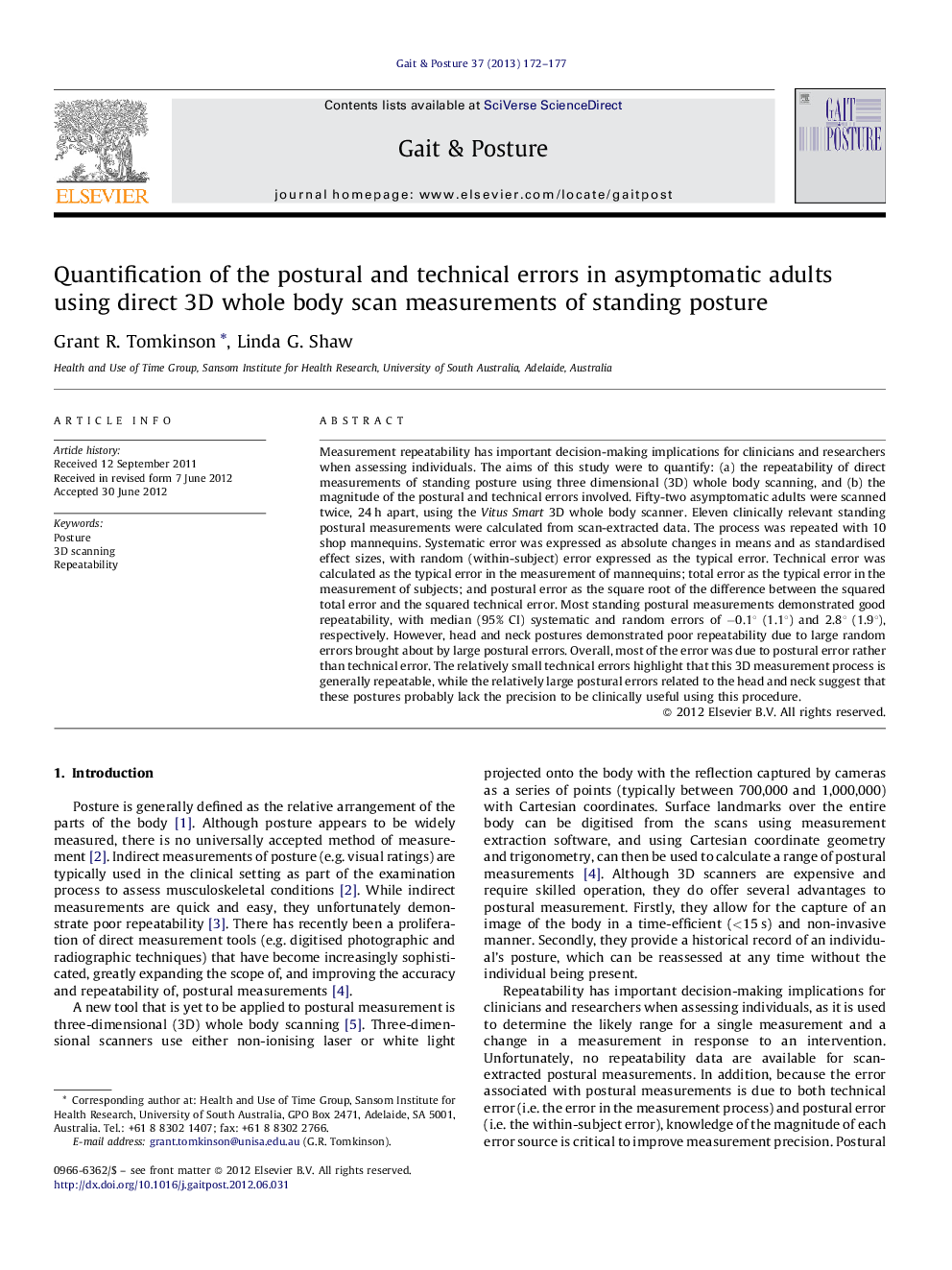| Article ID | Journal | Published Year | Pages | File Type |
|---|---|---|---|---|
| 6207911 | Gait & Posture | 2013 | 6 Pages |
Measurement repeatability has important decision-making implications for clinicians and researchers when assessing individuals. The aims of this study were to quantify: (a) the repeatability of direct measurements of standing posture using three dimensional (3D) whole body scanning, and (b) the magnitude of the postural and technical errors involved. Fifty-two asymptomatic adults were scanned twice, 24 h apart, using the Vitus Smart 3D whole body scanner. Eleven clinically relevant standing postural measurements were calculated from scan-extracted data. The process was repeated with 10 shop mannequins. Systematic error was expressed as absolute changes in means and as standardised effect sizes, with random (within-subject) error expressed as the typical error. Technical error was calculated as the typical error in the measurement of mannequins; total error as the typical error in the measurement of subjects; and postural error as the square root of the difference between the squared total error and the squared technical error. Most standing postural measurements demonstrated good repeatability, with median (95% CI) systematic and random errors of â0.1° (1.1°) and 2.8° (1.9°), respectively. However, head and neck postures demonstrated poor repeatability due to large random errors brought about by large postural errors. Overall, most of the error was due to postural error rather than technical error. The relatively small technical errors highlight that this 3D measurement process is generally repeatable, while the relatively large postural errors related to the head and neck suggest that these postures probably lack the precision to be clinically useful using this procedure.
⺠We examine the repeatability of standing posture using a new 3D scanning tool. ⺠Most standing postural measurements display good repeatability. ⺠Head and neck postures display poor repeatability due to large within-subject error. ⺠Our results have important decision-making implications for monitoring individuals.
